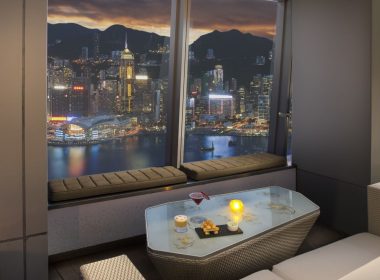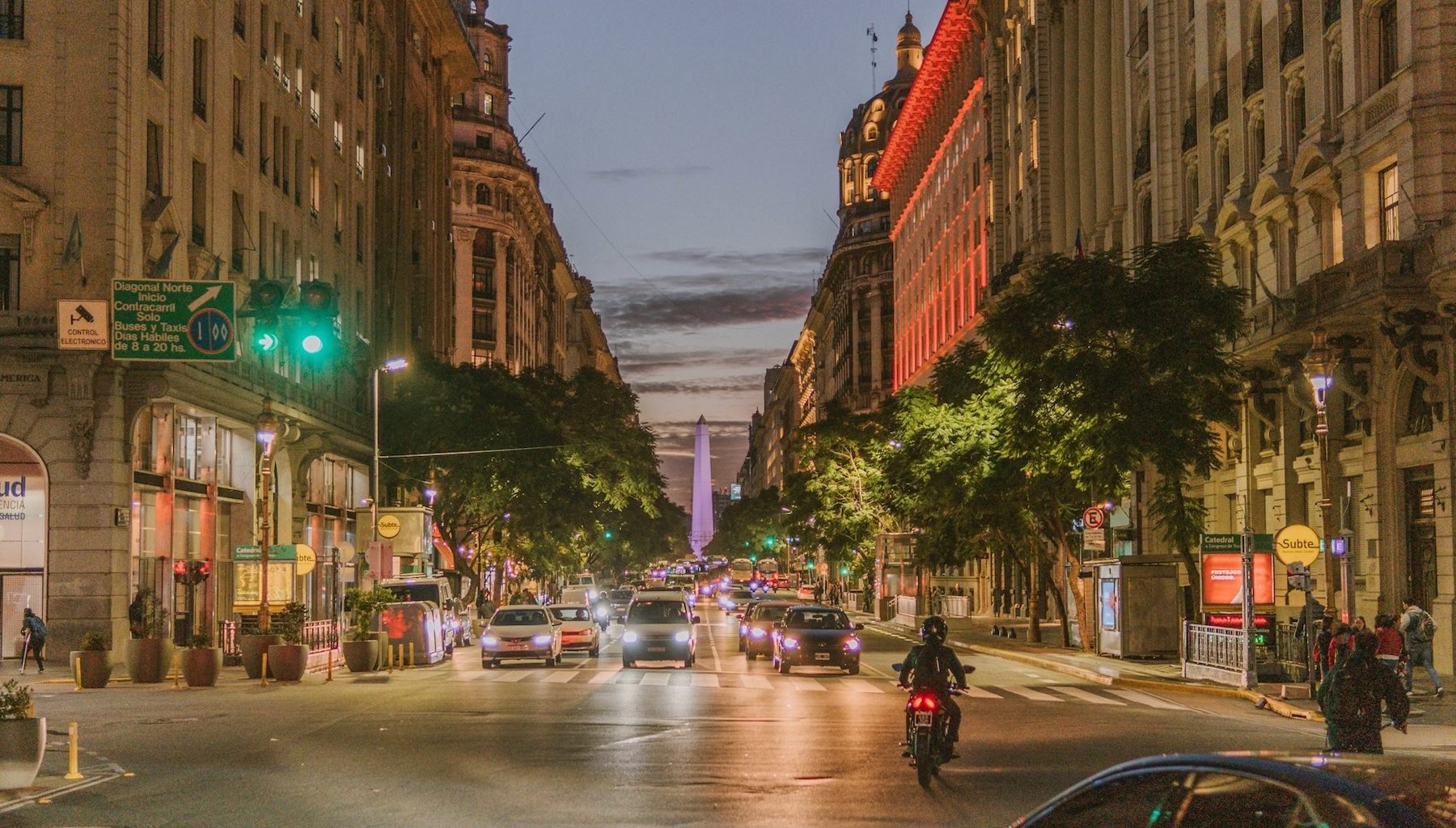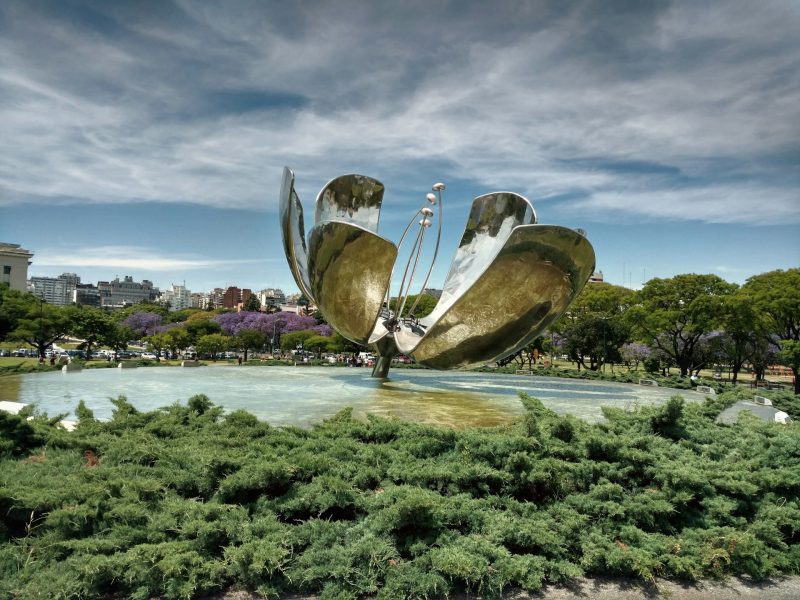Buenos Aires boasts the best of everything — meat, soccer, literature, coffee shops, street markets, theater, and tango, to name just a few. At least that’s what the porteños, or locals, will tell you — to protests from the rest of Latin America.
The joy for the visitor, depending on your own personal interests, is to investigate and decide for yourself how true those claims are.
On the darker, but equally interesting, side, the locals have a thing or two to tell visitors about human rights. How could they not, with the horrific times they’ve had in their short history?
Why Buenos Aires Will Steal Your Heart — One Neighborhood at a Time
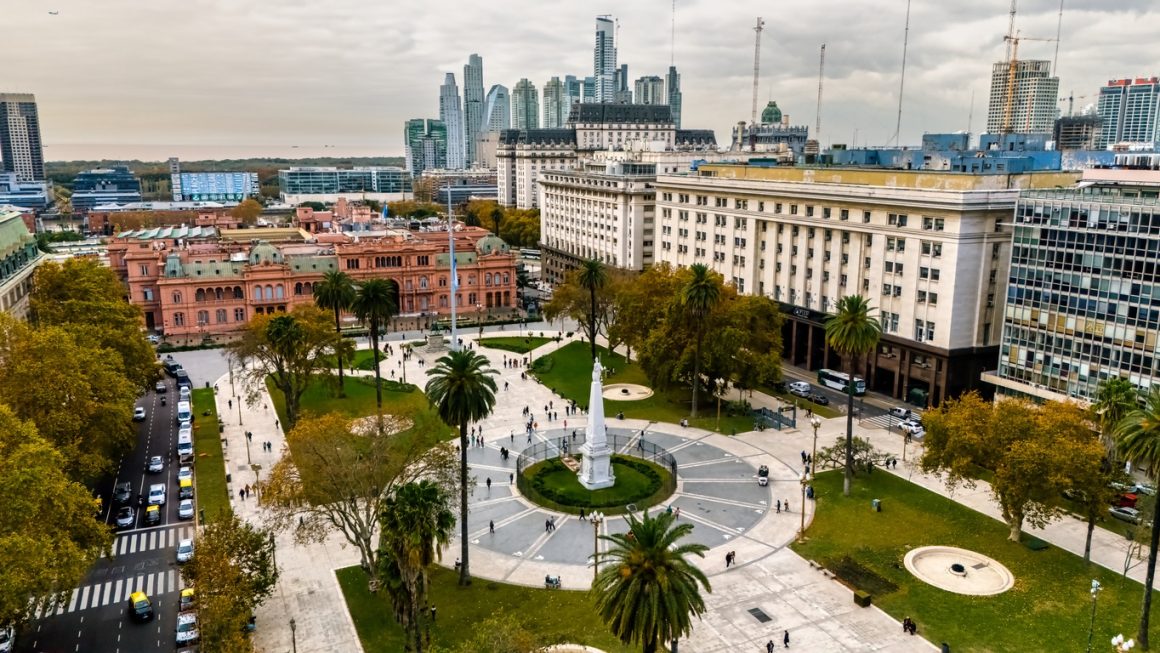

The Four Barrios to Know
Most, but not all, of the important venues are in four main barrios, or neighborhoods — the Microcentro, San Telmo, Palermo, and the new kid on the block, Chacarita.
Palermo: Faancy, Modern and Trendy
Palermo is chic and trendy, bursting with boutiques and coffee shops. It’s the barrio to be seen in.
San Telmo: Bohemian Charm & History
San Telmo is more bohemian, boasting a rich cultural history and an antique market which on Sundays morphs into a street market, or feria, stretching all the way to the city center.
Chacarita: The “New Palermo”
Chacarita has become the “new Palermo” — offering fine dining and interesting confiterías, or cafés.
Microcentro: The Beating Heart of Buenos Aires
The Microcentro contains pretty much everything else — including the financial district, the Colón Theater, the Plaza de Mayo, the presidential palace or Casa Rosada, and the Avenida 9 de Julio, which porteños will tell you is the widest in the world, with the obelisk poking out from the center.
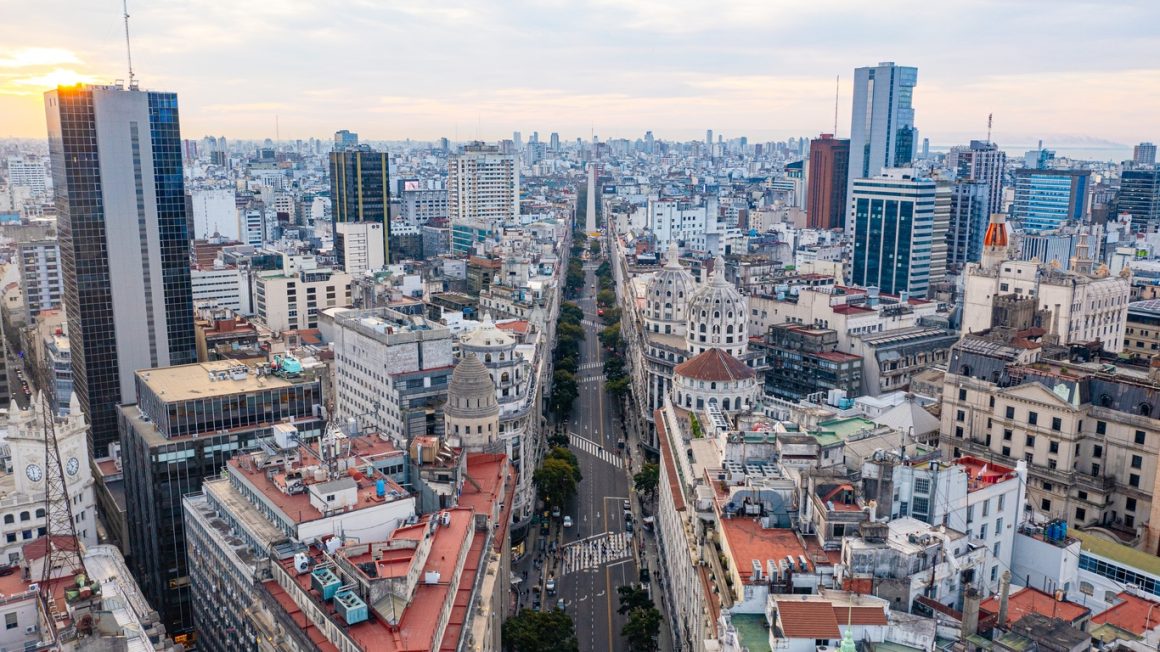

Both the Plaza de Mayo and the obelisk are where demonstrations and celebrations are traditionally held, usually with drums, flags, and barbecued meat — sometimes with police tear gas. All are within walking distance, with plenty of cafés and pizzerias along the way in which to rest tired legs.
Best Times to Visit Buenos Aires
The best times to visit Buenos Aires, or “Good Airs,” are when those airs are crisp and clean. That’s during and around spring (September to early December), when the city’s many trees are in full blossom, and autumn (late March to June), when it’s still hot enough to eat an asado, or barbecue, at a rooftop parrilla, or grill, in shorts and a T-shirt — if anyone is kind enough to invite you.
Getting Around in Buenos Aires
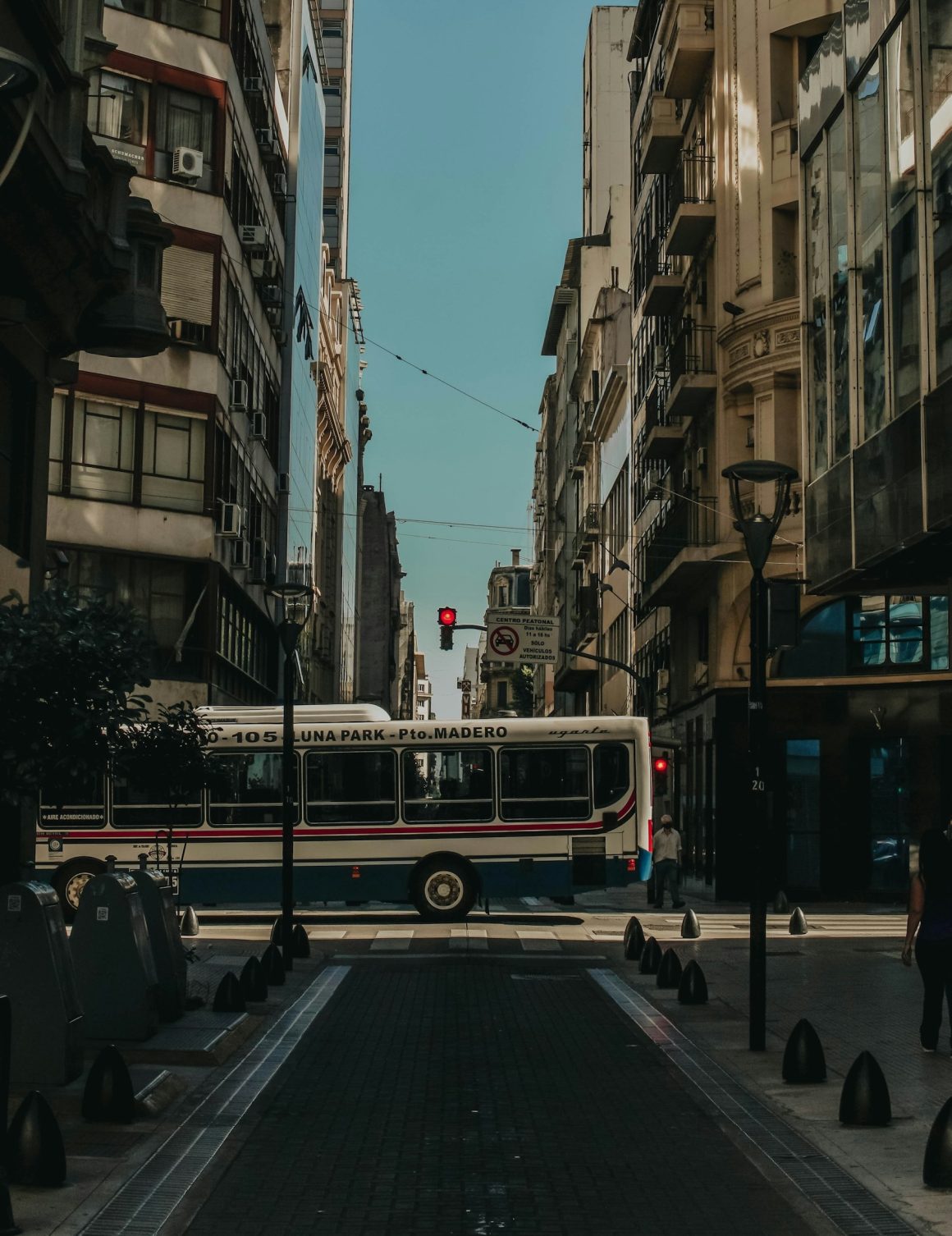

On Foot and Public Transport
Getting around is safe-ish (usual precautions apply) and easy. Walking is recommended (in central areas), even after dark, and for women, since this is a city that rumbles on into the early hours.
The SUBE card gives you reasonably priced and easy-to-top-up access to public buses and trains — both aboveground and underground. Available (show your passport) from an office in the delightfully refurbished, British-built Retiro railway station.
Taxis and Ride-Share


Didi, Uber, and Buenos Aires yellow-topped taxis are widely used and generally safe.
A City Built on Wealth and Style
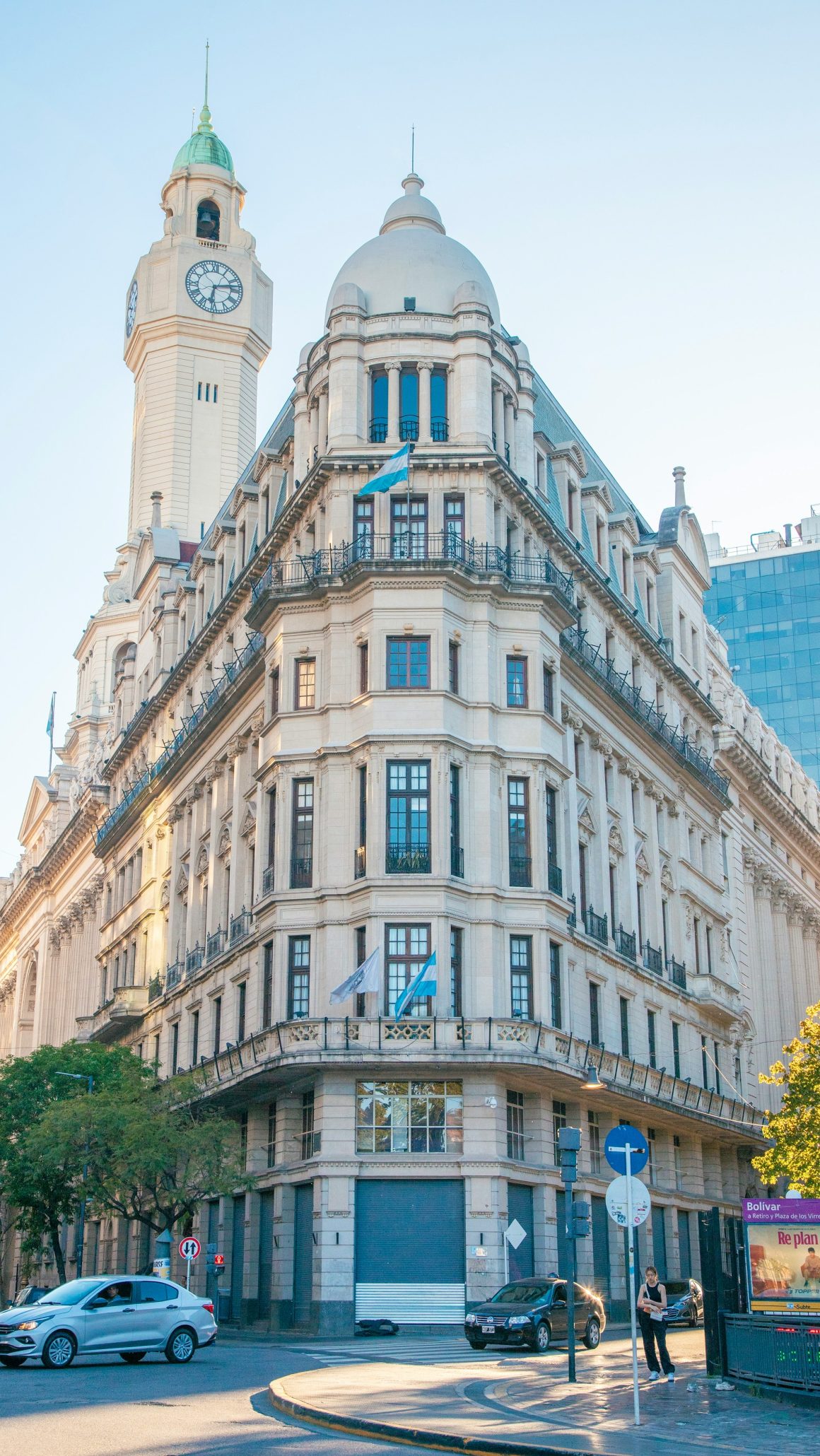

Buenos Aires, for the first half of the twentieth century, was — as the locals will never tire of telling you — one of the wealthiest and most glorious cities in the world, founded on its vast agricultural abundance, mostly meat and wheat. The evidence remains in its grandiose Parisian-style architecture, the flamboyant Colón opera house (tours in several languages — highly recommended), and the pungent aroma of its quality leather goods shops.
If leather is your thing, then Murillo Street in the Villa Crespo corner of Palermo has more stores selling cowhide products than you could swing a lasso at.
The Heart and Soul of Buenos Aires
Tango, Soccer, and Street Food
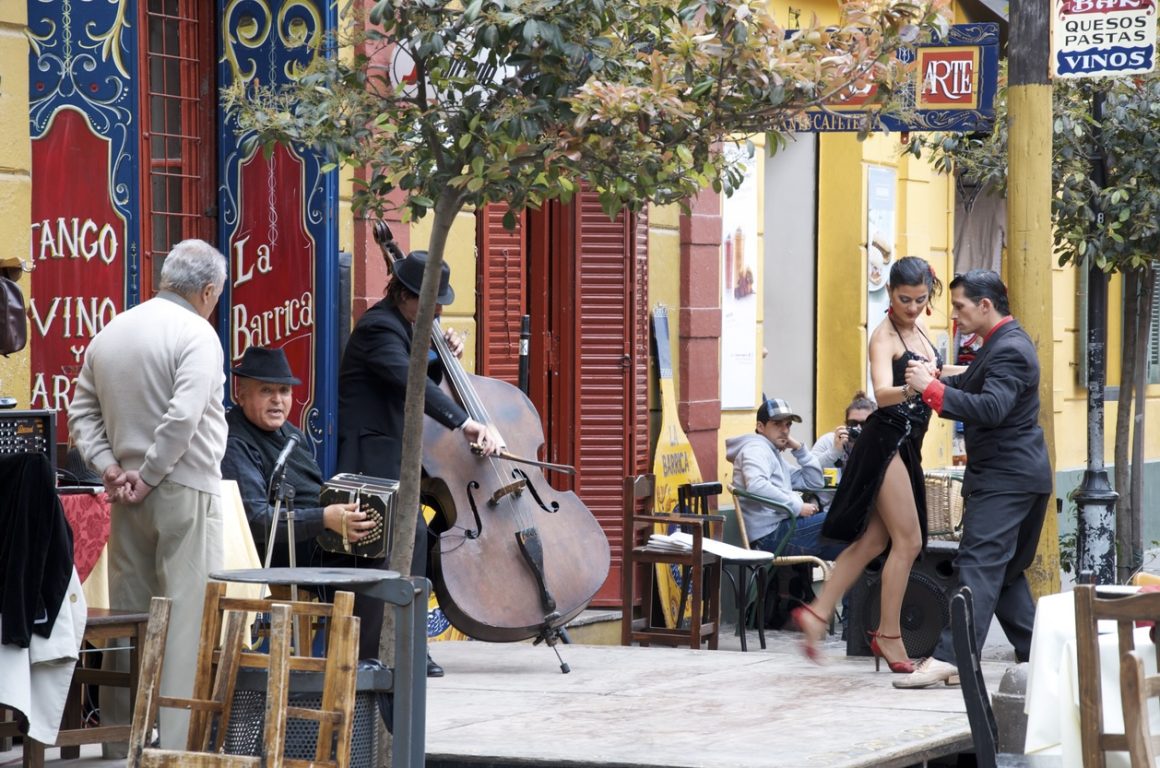

However, the city’s heart and soul were born — and still reside — on its cobblestone streets, with the swish of the tango dancers’ stiletto heels, with the passionate cheering of its soccer fans, and you’ve not tasted Buenos Aires until you’ve savored a choripán — a beef sausage in bread — bought from a street vendor’s old oil barrel-turned-barbecue. Vegetarians and vegans beware! Although there are plant-based alternatives, you won’t starve!
The Pizza Culture
Talking of which — pizza. Argentine pizza. Brought to Buenos Aires by Italian immigrants who thickened the bases and added cheese topping — much more cheese topping! And that abundant topping should again be topped with a slice of fainá — made from chickpeas.
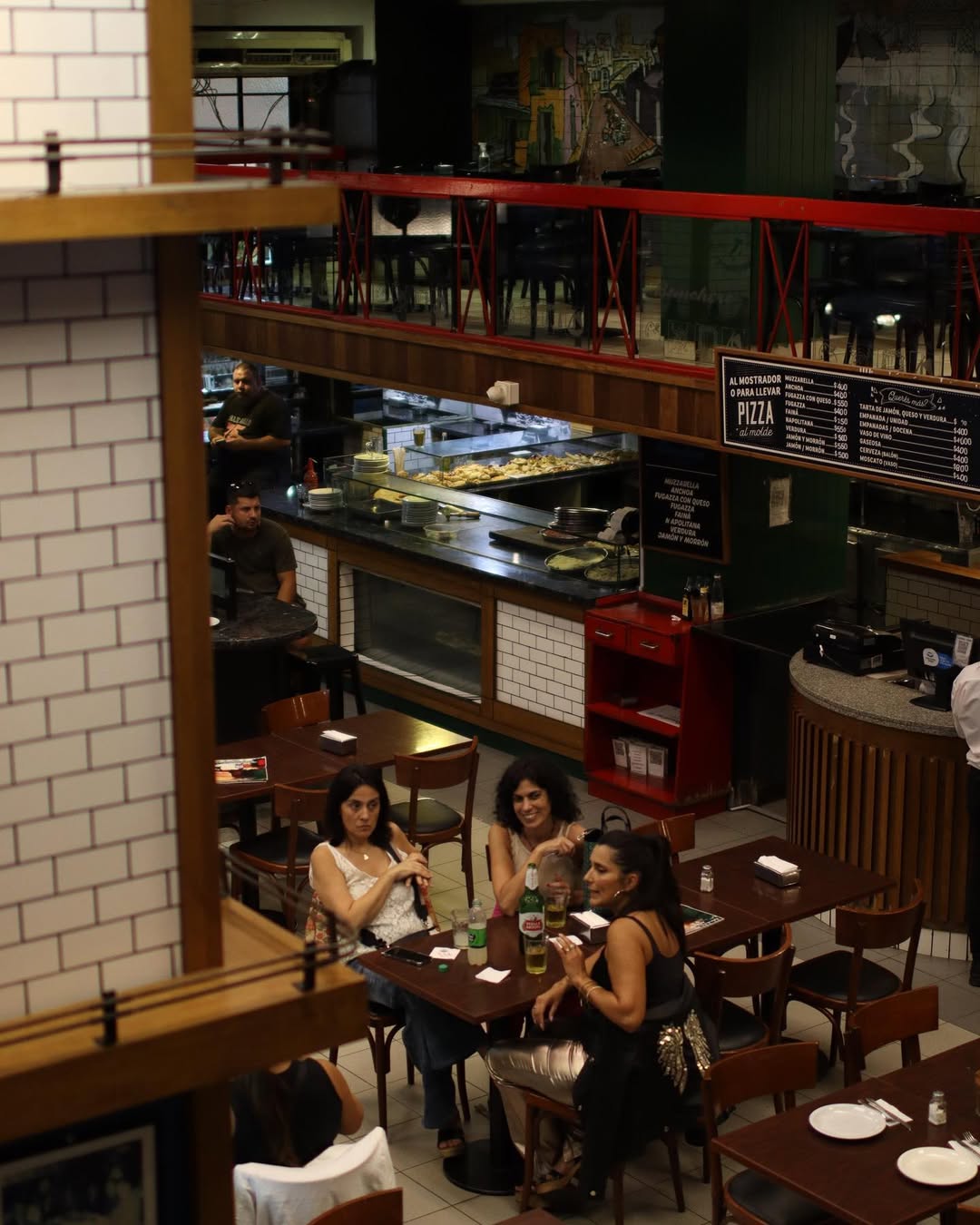

Your favorite pizzeria, like your favorite soccer team, is a personal and often contentious matter. Take your pick along Corrientes Avenue, from Banchero (Corrientes 1300), Kentucky (Corrientes 1502), Güerrin (Corrientes 1368), Las Cuartetas (Corrientes 838), and too many more to be listed here.
Eat standing up near the entrance if you’re in a hurry to get to one of the theaters in the same street. Or sit out back or upstairs if you have time to linger over your mozzarella or fugazza (onions and yet more cheese). But you’ll have to shout for the waiters to hear you — especially late on Friday and Saturday nights when the decibels reach ear-splitting levels.
Ice Cream Culture in Buenos Aires
And ice cream? Did someone mention ice cream? It’s another favorite the locals will tell you they inherited from their Italian grandparents and made even better. Again, ice cream is a matter of personal taste, and there’s a flavor for every palate in Buenos Aires.
Cadore


Cadore (Corrientes 1695) was once voted among the ten best heladerías — in the world! Flavors? Too many to mention, but any variety of dulce de leche is omnipresent and never disappoints.
Scannapieco


Scannapieco (Niceto Vega 4983) in Palermo, near the Mercado de Pulgas, or flea market, has been there since 1938, so they obviously know what they’re doing — passing the family recipe for dulce de leche with chocolate chip and pistachio down through three generations.
Mercado de Pulgas: A Treasure Hunter’s Paradise
Since we’re near the Mercado de Pulgas (Dorrego 1650) … more than 150 stalls in a huge warehouse offer furniture, jewelry, antique toys and street signs, sculptures, paintings, crockery, and musical instruments. The stallholders are as eclectic — and some as theatrical — as what they’re selling. Closed Mondays.
Theaterland and the Arts
Avenida Corrientes: The Heart of Theater
However, the heart of Buenos Aires theaterland is downtown, on Avenida Corrientes. That’s where you’ll find the classics, musicals, and wacky comedy. But there’s alternative drama on the fringes, in dark cellars and dimly lit backrooms all across the city.
Teatro Cervantes


Not quite alternative but not mainstream either is the Teatro Cervantes (Libertad 815). Inaugurated in 1921 — and it shows — in all its classical splendor, rich history, and slightly shabby décor.
Teatro Ciego


Teatro Ciego (Borges 1974) is a theater operating in total darkness. Many of its actors and technicians are blind or partially sighted. Several different short shows daily use music, sound, taste, touch, and darkness for a unique experience that, as their slogan goes, helps the audience to see when they don’t see. They also run workshops and shows for children.
MALBA: Museo de Arte Latinoamericano de Buenos Aires
If you’re looking for something more contemporary, then the Museo de Arte Latinoamericano de Buenos Aires, or MALBA (Figueroa Alcorta 3415), is the place to go. It houses the best of Argentine and Latin American art, as well as a cinema showing the kind of films you’re unlikely to find anywhere else.
The Soul of Tango
It’s said the soul of tango resides in Buenos Aires, where it was developed at the end of the nineteenth century by recently arrived immigrants, practicing their knife-fight moves in the bars and brothels of the emerging city. It’s come a long way since then.
There are show tango venues concentrated in the historical dance hotspots of San Telmo and La Boca in Buenos Aires, which come accompanied by fine food and wine (and usually a hefty bill), where you’ll be regaled with some of the most athletic yet soulful dance and music you’ve ever experienced.
El Viejo Almacén


El Viejo Almacén (Av Independencia 299) is one of the best established and authentic of these, set in sumptuous surroundings and serving fine food and wine.
El Querandí


If you still can’t work out how she swung that leg without stabbing him with her stiletto, then El Querandí (Perú 322) also provides historical context, along with dinner, cocktails, and music.
Milongas: Tango for the Locals


Then there are milongas, which the locals dance. They’re held in community halls, hotel lobbies and public plazas — at two in the afternoon or two in the morning, weekdays, weekends, and holidays, for anyone, anytime.
Find the one that suits you here: www.hoy-milonga.com/buenos-aires/es/milongas or here: turismo.buenosaires.gob.ar/es/tango/milongas
El Abrazo Verdadero


If you’re still unsure, then you can’t go wrong at El Abrazo Verdadero (Sarmiento 3632), or “the true hug,” which captures the inclusive spirit of everything tango is about.
Be careful not to catch the regular dancers’ eye unless you’ve got the moves.
Tango Lessons and Queer Tango Venues


If you haven’t, don’t fret, since many milongas come with classes beforehand. And if you want to see how this traditional dance is evolving, then visit one of the growing number of queer tango venues. Maldita Milonga (Perú 571) does all of the things mentioned above, and more.
The Tango World Cup
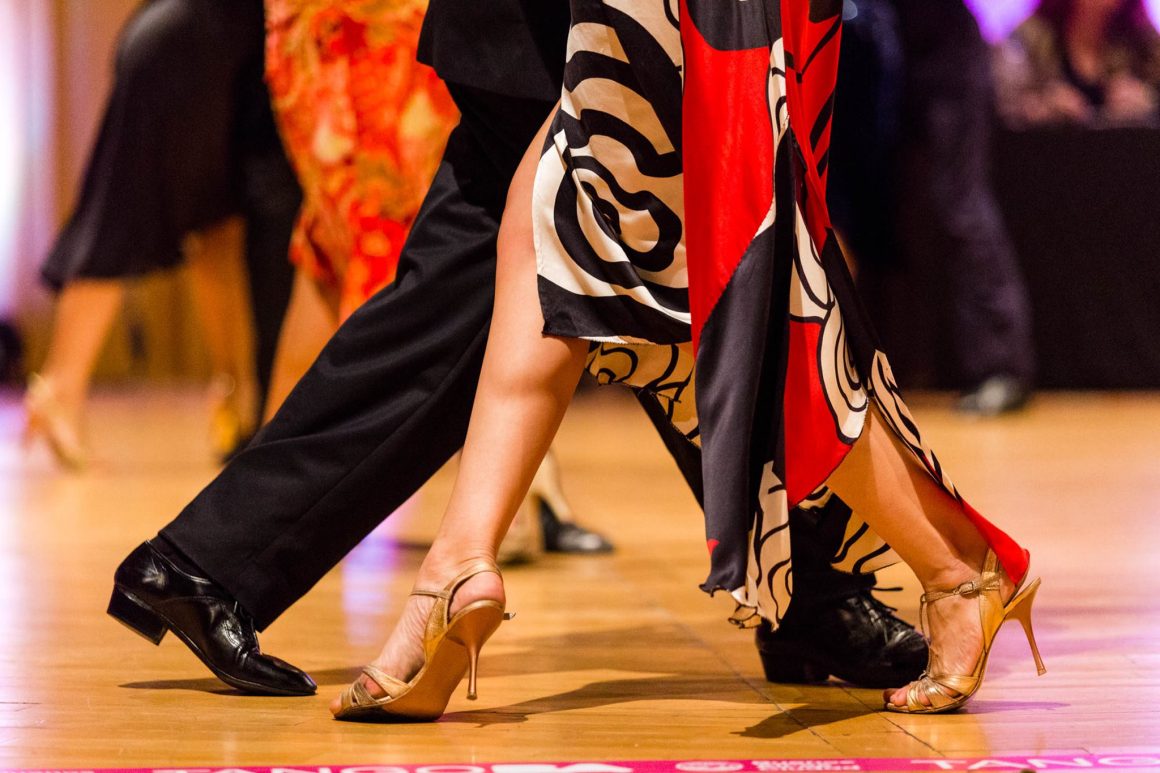

The Tango World Cup is held every year at the end of August at more than fifty venues around Buenos Aires, attracting the best dancers from around the world in a spectacular of sequined dresses and slicked-back hair.
Café Culture and Bares Notables
Buenos Aires Café Life
After all that dancing, you’ll need somewhere to rest, refresh, and discuss. Luckily Buenos Aires is blessed with hundreds of café-bars. All serve coffee and cake; some do lunch, dinner, and alcohol. Others have live music or poetry readings.
More than seventy Bares Notables, or Notable Bars, are listed by the authorities for their historical, cultural, and/or just cool-vibe qualities.


They include the Café Tortoni (Av de Mayo 825), where everyone goes, to the elegant Las Violetas (Av Rivadavia 3899), founded in 1884, and now with restored glass windows depicting nineteenth-century scenes of women with flowing dresses and parasols.
La Poesía


However, there’s a café to suit every taste, including the poets’ and writers’ favorite, La Poesía (Chile 502) in the San Telmo neighborhood, lined with books and oozing inspiration.
Simik Photographic Bar


It’s called the Simik, the Bar Palacio, or simply the photographic bar. Distant from the main tourist centers but worth a visit, especially if you’ve been drawn to the nearby Chacarita cemetery. It boasts, as one of its names implies, an abundant collection of mostly antique cameras and photographic equipment, on the walls and under glass panels on every table.
Live jazz every Thursday, Friday, and Saturday night. (Av Federico Lacroze 3901, near Lacroze subte station — Línea B)
Buenos Aires for Book Lovers
A Literary City
It has been said, by someone better read than myself, that Buenos Aires is the most literary city in the world, boasting more bookstores per capita than anywhere else.
It’s home every April to the world’s largest Spanish-language book fair and has produced more than its share of great writers — Jorge Luis Borges, Ernesto Sábato, and the more contemporary Mariana Enríquez among them. You can take the Borges tour, in Spanish or English.
Or sit and read one of his short but notoriously profound stories in the sumptuous Ateneo Grand Splendid, often touted as one of the best bookshops in the world. It was once a theater, the stage now a café, the orchestra pit selling children’s books and music.
The painted ceilings are sublime; the balconies divine. (Av Santa Fe 1860 — nearest Subte station: Min Carranza — Línea D).
Walrus Books
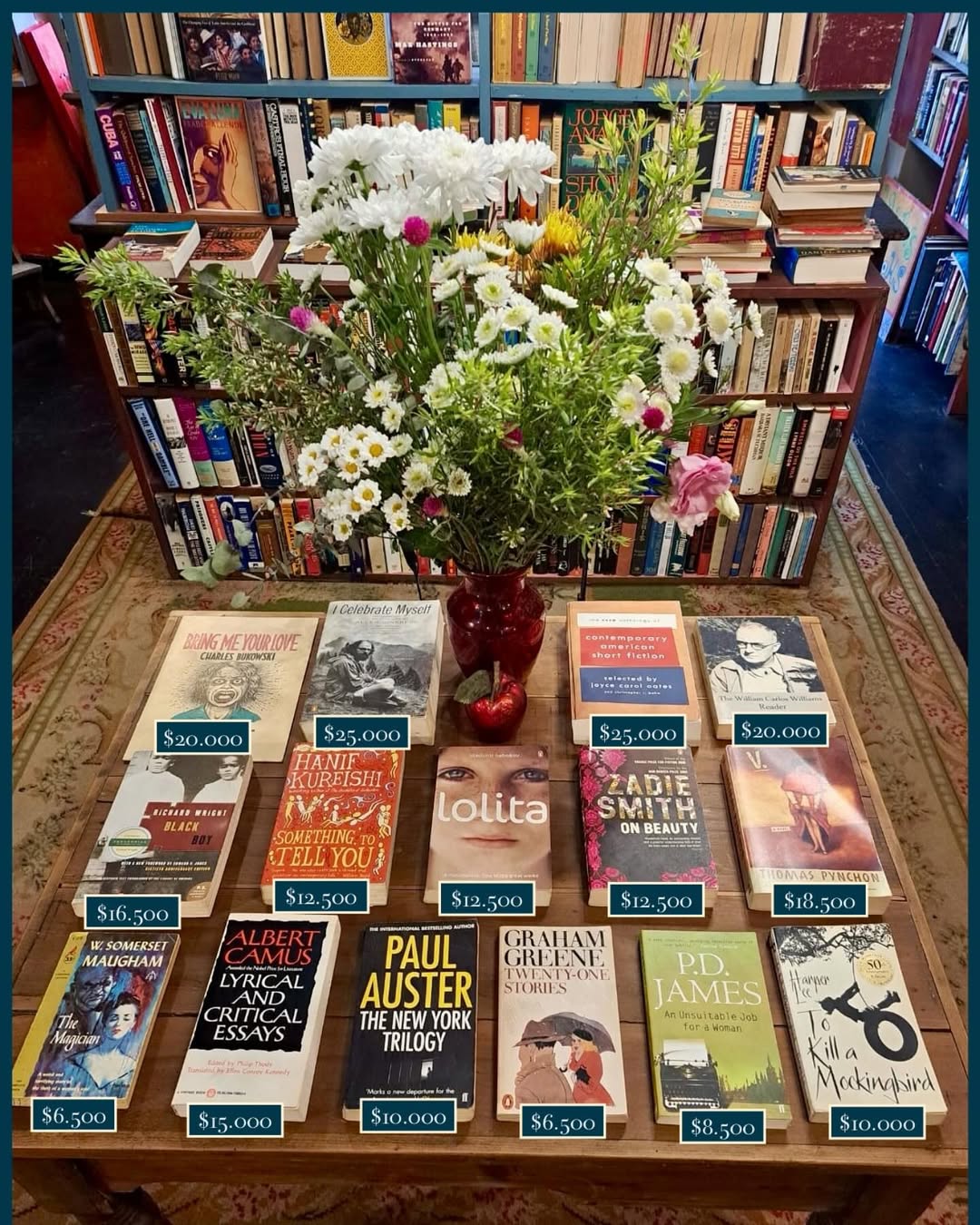

If you’re in need of a good book and your Spanish is still at the “buenos días, muchas gracias” stage, then the delightfully musty secondhand English-language bookshop in San Telmo, Walrus Books (Estados Unidos 617), is the place for you. It also runs literary courses, in English, both online and in person.
Soccer: Passion and Identity


The Debate of the City’s Soul
The debate is still raging as to whether the true soul of Buenos Aires lies in its tango, its food and coffee shops, or its culture. But then there’s soccer. Love it, hate it, or just indifferent, it’s impossible to escape fútbol in Buenos Aires. And neither should you.
The game, introduced by British railway workers at the end of the nineteenth century, is an intrinsic part of the national psyche, fed by victories in three World Cups.
Neighborhoods are decorated in their club colors and murals of superstars such as Diego Maradona and Lionel Messi.
River Plate and Boca Juniors
The two biggest clubs are River Plate, or “the Millionaires,” situated in the plush northern Núñez neighborhood, and Boca Juniors, or “the pig dung shovellers,” in the working-class La Boca port area. Both have museums attached to their impressive stadiums.
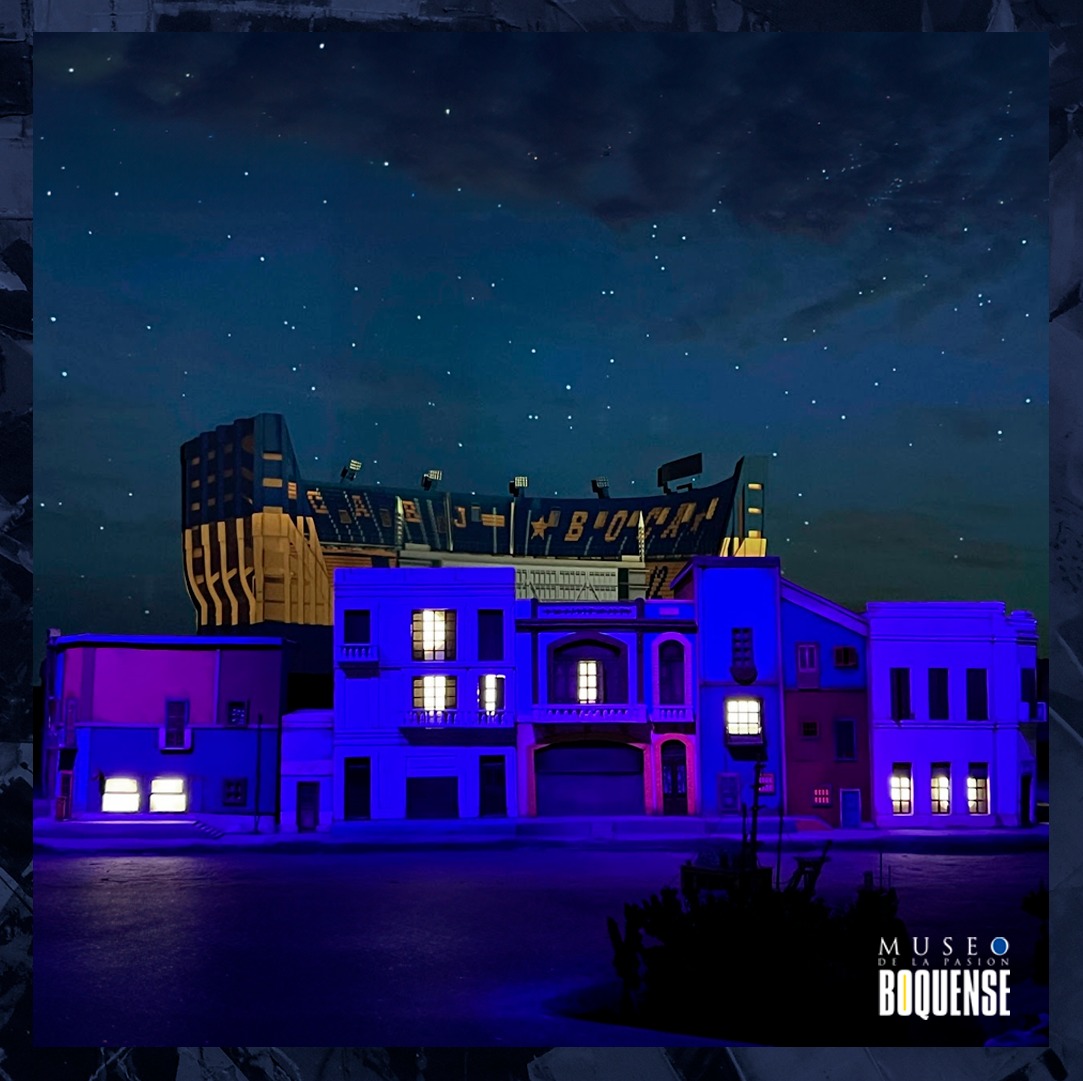

Both display abundant silverware, with access to changing rooms and pitch side. Tickets for games are now mostly only available to tourists on specialized websites. They cost a good deal more than the local fans pay.
Smaller Clubs


There are other, more modest clubs in Buenos Aires: Vélez Sarsfield, Huracán, and my personal favorite — Argentinos Juniors in the La Paternal barrio, where Diego Maradona began his soccer odyssey. The walls around the stadium are suitably decorated, tickets are easier to come by, and the club also has a small museum run by fans.
Hidden Havens in the City
San Ramón Nonato Convent
Buenos Aires, but especially the Microcentro, is noisy and teeming with traffic, so the San Ramón Nonato convent — founded in 1603 and still there… kind of — is an unexpected but welcome oasis of tree-filled tranquility, boasting restaurants, book and antique shops, and a first-floor theater. Part of the convent remains, but the monastic nuns don’t mix, staying quietly in their cloisters. The entrance is on Reconquista and Perón streets in the heart of the bustling financial district.
Reserva Ecológica
The Reserva Ecológica, or Ecological Reserve, is another haven of peace and quiet — albeit an accidental attraction. It is made from the earth excavated to build the foundations of the luxury high-rises in the nearby port renovation project of Puerto Madero and dumped in the neighboring Río de la Plata, or River Plate.


Grass grew on the rich soil, which attracted insects, reptiles, and birdlife. The reserva is now a green paradise just the sound of a woodpecker’s call from San Telmo. It’s been declared a site of international ornithological interest and is hugely popular with walkers, joggers, cyclists, and picnickers. Closed Mondays and when it rains.
Cemeteries and Cultural Heritage
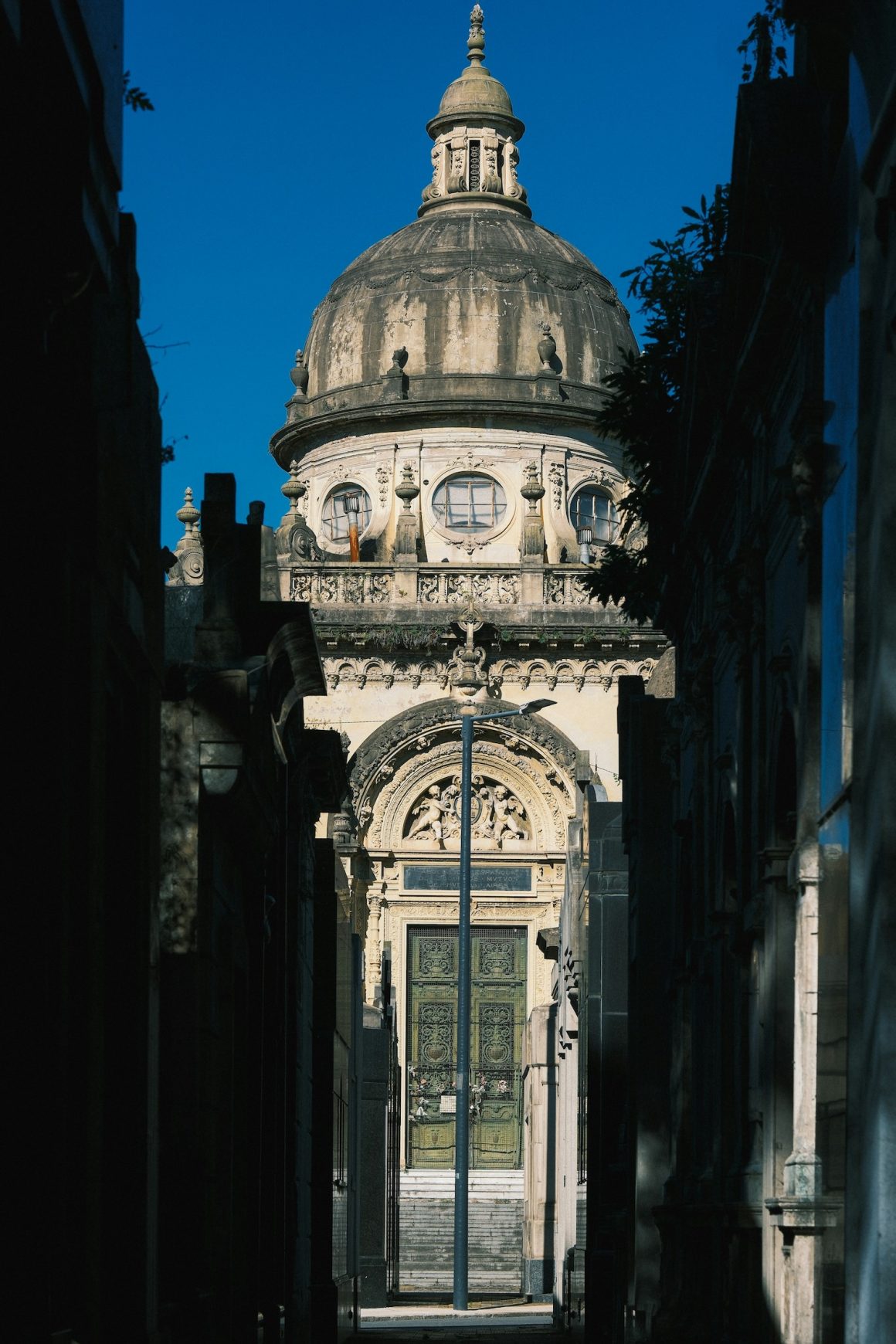

Recoleta and Chacarita
Also peaceful, but for different reasons, are the city’s cemeteries. Recoleta is the most sought after — to visit and be buried in. Its main attraction is the tomb of former first lady and glamour icon, Evita. However, Chacarita houses the remains of the city’s more salubrious — and some would say more interesting — dear departed. They include tango icon Carlos Gardel, forever with a cigarette in his statued hand, boxers, artists, actors, and writers.
With 95 hectares, it’s the largest cemetery in Argentina — easily big enough to get lost in, unless you take one of their guided tours. In the far corner, the very adventurous will find the well-tended British and German cemeteries, their tombstones telling tales of colonists, soldiers, and sailors born in Norfolk, Newcastle, and Nuremberg and meeting their ends while taming the wild pampas or from nineteenth-century yellow fever before being laid to rest a long way from home.
Remembering the Past
Mothers of the Plaza de Mayo
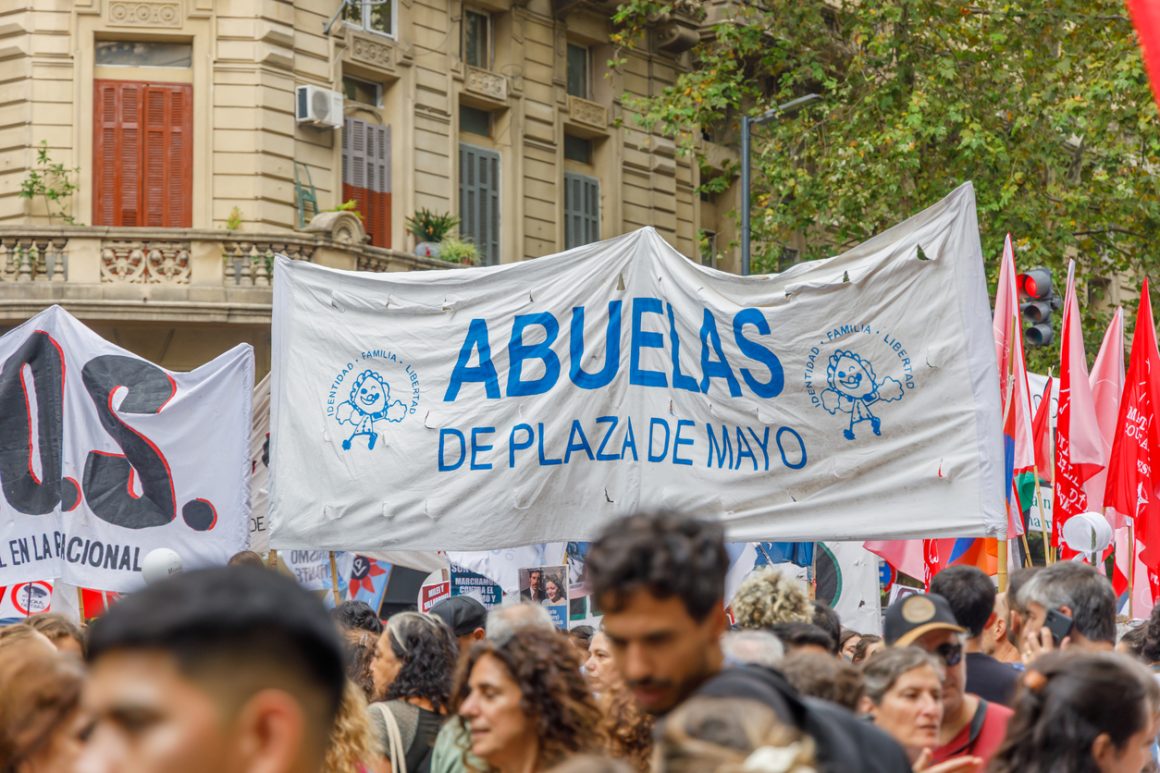

The iconic Mothers of the Plaza de Mayo still march every Thursday afternoon outside the presidential palace to demand answers to what happened to their loved ones during the brutal military dictatorship that ran Argentina from 1976–83. All are invited to join them — from 3 p.m.
ESMA Memory Site
The ESMA, or Naval Mechanics School by its Spanish initials, was the largest and most notorious torture and murder center used during that dictatorship. Hundreds were killed there, their bodies then dumped from planes into the nearby River Plate. The huge complex has since been converted into a center for remembrance and research, housing an art gallery, cultural events, and a museum.
Guided tours are available, some in English. The site is situated in the northern neighborhood of Núñez, on the busy Libertador Avenue. (Nearest train station: Núñez)
Feria de Mataderos: Tradition on the City’s Edge
If you’re going to take one trek from the sophisticated center of the city to the rougher outskirts, then the Feria de Mataderos is the one.
Mataderos is the meat-packing neighborhood of Buenos Aires where, on weekdays, thousands of head of prime beef arrive from Argentina’s fertile grasslands to be sorted and slaughtered, ready to be served with chimichurri sauce.
But on Sundays, the area in front of the stockyards converts to a craft market selling food products, ponchos, and gaucho berets.


Some of the finest meat you’ll find anywhere is served from open-air stalls while live folklore and tango musicians invite you to dance with them in the cobblestoned square in front of the stage. It demonstrates the best of Argentina, on the outskirts of Buenos Aires — an alluring invitation to travel further and delve deeper.




